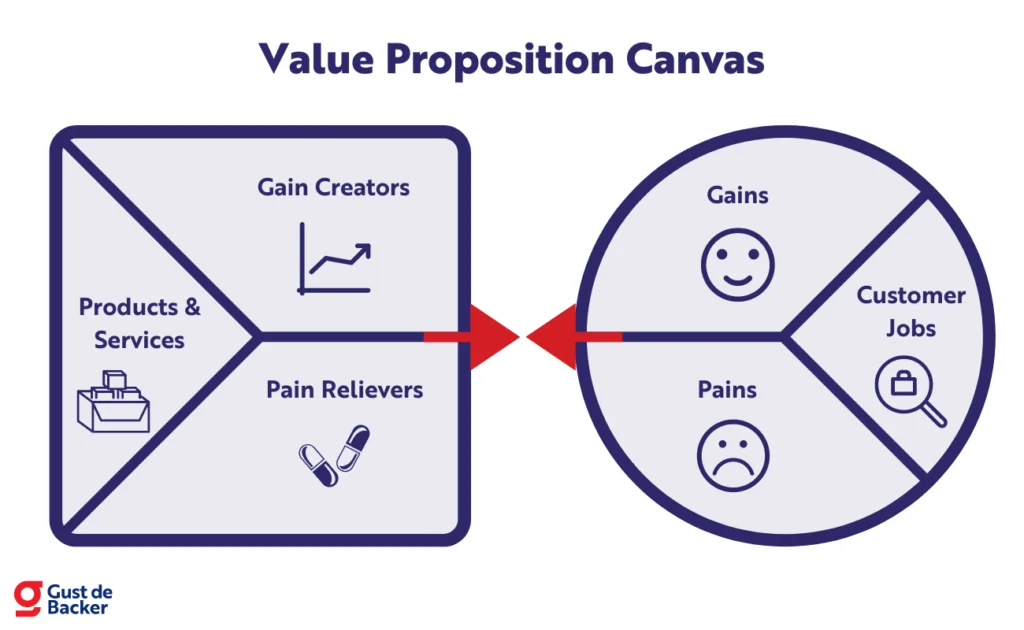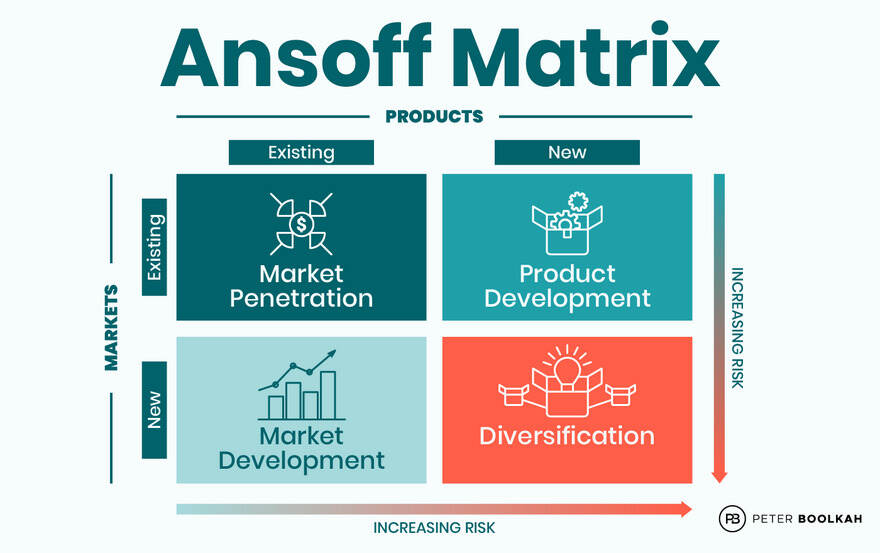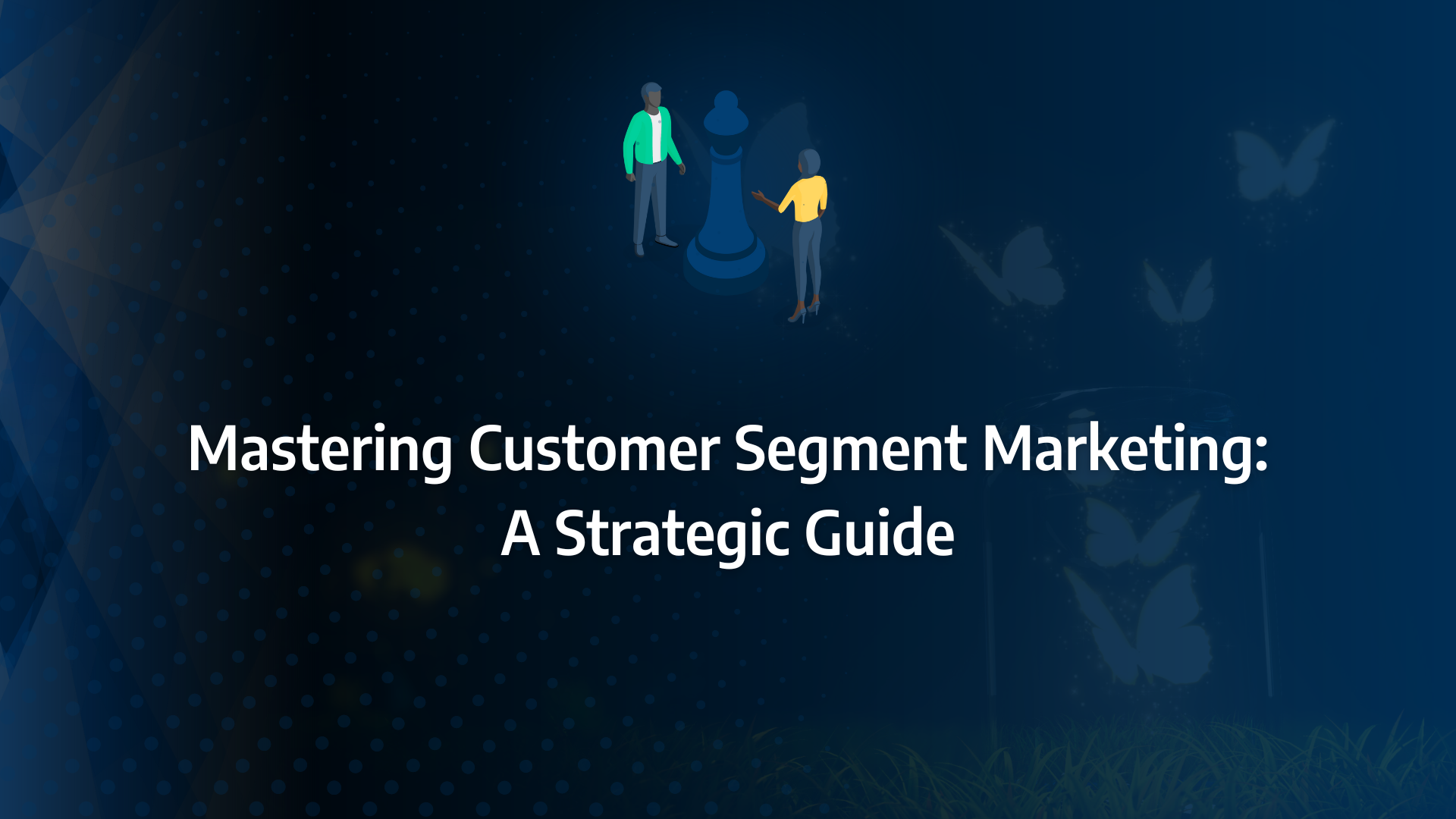Generic marketing strategies no longer yield the desired results. To truly engage your audience, it’s essential to segment your customers into distinct groups based on their specific needs, behaviours, and preferences.
This guide dives deep into customer segment marketing, offering a comprehensive approach to crafting tailored strategies that resonate with each unique segment. By understanding these segments, you can create targeted campaigns that not only speak to your audience’s specific pain points but also drive higher engagement and conversion rates.
- Identify Core Segments: Use data-driven insights to categorise your customer base into distinct segments based on shared characteristics and needs.
- Customise Campaign Strategies: Develop specific marketing strategies tailored to each segment’s unique preferences and behaviours.
- Leverage Advanced Tools: Implement advanced segmentation tools to dynamically group customers and refine targeting efforts.
- Monitor and Adjust: Continuously track campaign performance, making data-driven adjustments to optimise outcomes for each segment.
- Enhance Engagement: Use personalised messaging to address the unique challenges of each customer segment, improving engagement and conversion rates.
What is Customer Segmentation?
Customer segmentation allows businesses to identify and understand their customer segments, enabling them to cater to specific needs and preferences, ultimately driving sales and enhancing customer loyalty.
Customer segmentation involves dividing customers into distinct groups based on various criteria such as age, gender, purchasing behaviour, job title, or political affiliation. This segmentation helps businesses to develop a detailed customer profile and reputation, which is crucial for generating sales. By leveraging different types of segmentation, businesses can gain deeper insights into their customer base, allowing for more tailored and effective marketing strategies.
In simple terms, customer segmentation is a strategic approach to knowing and understanding your customers better. This involves analysing customer data to identify different customer segments and using this information to create more personalised and relevant marketing messages.
How Can Customer Segmentation Benefit Your Business?
Enhanced Customer Retention
Customer segmentation plays a critical role in improving customer retention. By understanding the specific needs and preferences of each customer segment, businesses can tailor their communication and engagement strategies accordingly. This personalised approach helps build stronger relationships with customers, leading to increased satisfaction and loyalty. For instance, tailoring communication based on the customer lifecycle stage can significantly enhance the customer experience and retention rates.
Optimised Pricing Strategies
A robust customer segmentation strategy enables businesses to optimise their pricing strategies. By understanding the income range and purchasing power of different customer segments, companies can set prices that are attractive and affordable for each segment. This price optimisation ensures that products and services are priced appropriately, leading to higher sales and customer satisfaction.
Refined Marketing Messages
Dividing customers into segments allows businesses to fine-tune their marketing messages. By identifying the specific characteristics and preferences of each customer segment, businesses can create targeted marketing campaigns that resonate more effectively with their audience. This targeted approach increases the likelihood of converting prospects into loyal customers by grabbing their attention and delivering relevant messages.
Increased Brand Awareness
Customised marketing communications for different customer segments foster a better connection between the business and its customers. Recognising customers as unique individuals rather than just another entry in a database can significantly enhance brand loyalty and value. Personalised interactions and tailored marketing efforts can lead to improved brand awareness and a stronger customer-business relationship.
What Matters Most?
Understanding buyer personas goes beyond demographics; it involves exploring the deeper motivations and pain points unique to each segment. Clients often discover that when they tailor their storytelling to resonate emotionally with these personas, they create lasting connections that foster loyalty. Additionally, utilising data-driven insights helps uncover patterns that inform targeted strategies, enabling businesses to align their offerings with the specific needs of their audience. This holistic approach can significantly enhance the impact of marketing efforts.Get In Touch
What are the key differences between market segmentation, customer classification and lead segmentation?
Understanding the distinction between market segments and customer classification is crucial for developing effective marketing strategies. Both concepts involve grouping customers, but they serve different purposes and applications.
Market Segmentation
market segmentation focuses on dividing the broader market into distinct groups based on shared traits. The primary goal of market segmentation is to understand various groups within the market to tailor marketing strategies and business decisions accordingly. For example, a company might segment the market into enterprises, small businesses, specific industries, or geographic locations.
Customer Classification
Customer classification, on the other hand, categorises individual customers into groups based on similar characteristics. The aim is to personalise interactions and improve customer experiences by understanding their unique attributes. Customer classification might involve segmenting users based on demographics, usage patterns, engagement levels, and other individual factors.

Understanding the Distinction Between Customer Segmentation and Lead Segmentation
Both customer segmentation and lead segmentation are critical for understanding your audience, yet they serve different purposes and have distinct applications.
Customer Segmentation
Customer segmentation is dedicated to existing customers, with the goal of enhancing their experience, fostering loyalty, and improving retention. By pinpointing specific customer segments that exhibit unique needs and preferences, businesses can customise their products, services, and customer segment marketing campaigns to better cater to these groups.
For example, imagine a clothing retailer utilising customer segmentation. They might identify one segment consisting of young adults who prefer trendy, fashionable clothing, while another segment might be composed of older adults who favour classic, timeless styles. With this knowledge, the retailer can create targeted marketing campaigns for each customer segment, highlighting the relevant clothing styles and promotions that resonate with each group’s tastes.
Additionally, customer segmentation tools enable businesses to offer a personalised customer experience. By understanding the distinct characteristics and preferences of each segment, companies can provide customised recommendations, personalised offers, and tailored communication, thereby enhancing overall customer satisfaction and loyalty.
Lead Segmentation
On the other hand, lead segmentation focuses on potential customers who have not yet made a purchase. The main aim of lead segmentation is to prioritise these leads and allocate resources effectively. By categorising leads, businesses can identify the most promising prospects and devise targeted strategies to convert these leads into paying customers.
Source: CampaignMonitor
Types of Customer Segmentation
Choosing the right customer segmentation model is crucial and varies in importance based on your industry and brand. Let’s explore the different types of customer segmentation to understand how each can enhance your customer segment marketing efforts.
Behavioural Segmentation
Behavioural segmentation tailors marketing efforts based on how customers interact with your brand.
For instance, consider setting up an automated email or SMS series when a customer downloads an ebook from your website. This specific and trackable behaviour indicates the type of content these subscribers are interested in.
- Website Activity: Track the activities of your customers, such as the pages or elements they interact with most on your website.
- E-commerce Activity: Monitor actions taken in your online store, including products viewed or added to abandoned carts.
- Frequency of Purchases: Identify customers who make regular or repeated purchases and consider rewarding them with exclusive offers.
Demographic Segmentation
Demographic segmentation involves grouping your audience into sub-categories based on demographic information.
- Gender: Ensure inclusivity with plenty of categorisation choices to capture every gender and make customers comfortable.
- Age: This can guide you in understanding customers’ likely budgets and preferred products.
- Marital Status: Segment into categories like “married,” “in a relationship,” and “single.”
- Occupation: Segmenting by occupation provides insights into customer income, budgets, interests, and availability.
Geographic Segmentation
Geographic segmentation is based on where your audience is physically located and is particularly beneficial for B2C businesses affected by local climate and customs.
- Preferred Language: Knowing this helps in better communication, for example, using both English and Spanish in a US-based business.
- Location: Different marketing approaches for residents of New York versus those in Alabama.
- Transportation: Understand customer commuting habits to enhance marketing efforts, such as using out-of-home advertising on public transport.
Needs-based Segmentation
Needs-based segmentation divides your audience for personalised messaging based on their current emotional, physical, and financial needs.
- Product Features: Identify specific requirements or features that fulfil customer needs to keep your products inclusive.
- Service Needs: Consider aspects like smooth onboarding processes, effective customer service, or prompt deliveries.
Source: Higher Logic
Psychographic Segmentation
Psychographic segmentation divides your audience based on their values or attitudes towards certain products.
- Interests: Focus on interests like sports, games, or activities to direct your ads or collaborate with relevant institutions.
- Values: Determine values from surveys or interviews and fine-tune your product or service to meet these specific needs.
Technographic Segmentation
Technographic segmentation involves dividing your audience based on the technology they use. For instance, a SaaS company might send personalised emails to new users based on whether they use HubSpot or Salesforce.
- Device Type: Segment customers by the type of device they use to interact with your website, such as phones, tablets, or computers. This can inform the need for a mobile app or ensuring a mobile-responsive site.
- Browser Type: Identify the browsers your customers use, such as Google Chrome, Mozilla Firefox, or Safari, and ensure your content displays properly across these platforms.
Building Your Customer Segmentation Strategy
Set Clear Expectations and Objectives
When embarking on a customer segmentation initiative, it is essential to establish clear expectations and objectives from the outset. Setting specific goals for your customer segmentation efforts helps to focus activities and measure success over time. These objectives should align with your overall business goals and consider the limitations of available data and resources.
Collect Customer Data
Effective customer segmentation relies on comprehensive data collection and analysis. Gather diverse forms of customer data such as point of sale data, social media engagement metrics, and loyalty card information. Qualitative data provides personal insights into customer thoughts and behaviours, while quantitative data offers numerical insights like transaction records, sales figures, and conversion rate statistics.
Segment Your Customers
Once you have collected sufficient customer data, the next step is to segment your customers. Choose a customer segmentation model that aligns with your goals. For instance, if you aim to understand what drives your customers’ purchasing decisions, psychographic segmentation might be beneficial to explore their values and beliefs. However, it is important to remember that relying on a single type of customer segmentation is rarely sufficient to fully understand your customers’ diverse needs and preferences.
Develop a Customer Segmentation Strategy
With identified and evaluated customer segments, the focus shifts to developing a customer segmentation strategy that targets and engages these specific segments effectively. This involves tailoring your marketing efforts and product offerings to meet the unique needs and preferences of each segment. Key factors to consider include customer communication channels, content messaging, and product recommendations.

Launch and Measure Continuously
The final step involves launching your customer segmentation strategy and continuously measuring its success to ensure ongoing optimisation. Identify key performance indicators (KPIs) that align with your segmentation objectives, such as customer retention rates, revenue per visitor, and return on investment. Regularly monitor these KPIs to refine and improve your strategy over time.
Our Tactical Recommendations
Adopting a micro-segmentation strategy can lead to substantial improvements in conversion rates, as it allows for highly tailored messaging that speaks directly to niche audiences. We typically find that testing different marketing channels for each segment reveals which methods yield the best engagement, allowing for more efficient resource allocation. Furthermore, aligning sales and marketing teams ensures that messaging is cohesive and resonant, maximising the effectiveness of segmented marketing strategies.Get In Touch
Challenges and Tactics within Customer Segmentation
Best Practices for Customer Segmentation
Look Beyond Marketing Communications
Customer segmentation impacts far more than just marketing communications. It influences how your business competes in the market. A well-developed segmentation schema affects alliances, technology and product roadmaps, channel and pricing strategies, and even the type of salespeople you hire. Therefore, it is crucial that leadership teams outside of marketing also understand and engage in the segmentation process.
Prioritise Effectiveness over Efficiency
The essence of segmentation lies in recognising the differences between customer segments. If every target group receives the same message, mailing, or telemarketing script, the effort becomes futile. A truly effective campaign must stem from an understanding of each segment’s values and buying motivations, fostering engagement rather than merely driving transactions.
Adopt a Criteria-Based Approach
To avoid internal biases in segmentation, employ a criteria-based, data-driven approach. Establish criteria that apply equally across all customer segments to ensure fact-based decisions. Criteria-based segmentation involves identifying and selecting criteria to evaluate and determine the best-fit segments. We recommend focusing on two dimensions: accessibility and opportunity.
Challenges of Customer Segmentation
Data Quality Issues
One of the primary challenges in customer segmentation is maintaining data quality. Inaccurate data in source systems can lead to poor grouping. Attributes like age, gender, and marital status, if not properly maintained, result in inaccurate segments and less useful information. If users lack confidence in the data quality, they are unlikely to utilise the segments effectively. Regular data maintenance and cleansing are essential to ensure accuracy.
Understanding Segmentation Definitions
Another common problem is the misunderstanding of segmentation definitions among business users. Multiple customer segments may be set up to support specific business processes. Users must be trained to understand the different customer segments, the data representing these categories, and the appropriate usage of each customer segmentation for proper analysis scenarios.
Utilising Customer Segmentation Tools
To enhance the effectiveness of your customer segment marketing, leveraging advanced customer segmentation tools is imperative. These tools help in collecting, analysing, and interpreting data, ensuring precise segmentation. Tools like CRM systems, data analytics platforms, and marketing automation software are vital in streamlining the segmentation process and implementing effective strategies.
Customer Segmentation Tools & Technology
Selecting the right customer segmentation tools is pivotal in enhancing the effectiveness of targeted marketing strategies, facilitating personalised customer experiences, and driving higher conversion rates.
When shortlisting, trialling, and selecting customer segmentation tools, consider the following:
Identify the Problem to Solve: Begin by pinpointing the specific customer segmentation feature gap you need to address. This clarity will help determine the essential features and functionalities your customer segmentation tool must provide.
Determine User Requirements: Evaluate who within your organisation will use the software and how many licences will be necessary. Consider whether it will be utilised by just the customer service team or the entire organisation. This assessment will guide decisions on ease of use for all versus speed and efficiency for power users.
Integration with Other Tools: Clarify the existing tools you plan to retain, replace, or integrate with your new customer segmentation tool, such as accounting software, CRM systems, or HR platforms. Decide whether seamless integration with existing tools is necessary or if consolidating multiple tools into one solution is more feasible.
Top Customer Segmentation Tools
Sprout Social is a comprehensive social media management platform designed to centralise your social media marketing efforts. It includes robust customer segmentation tools that help businesses categorise and target their audience more effectively. By segmenting the customer base based on demographics, behaviour, and preferences, businesses can create highly personalised and targeted marketing campaigns. The platform’s reporting and analytics features offer valuable insights to optimise customer interactions and boost engagement and conversion rates.
UserGuiding is onboarding software featuring a powerful customer segmentation and reporting suite. It crafts personalised onboarding experiences for your customers and collects data from these interactions. The tool provides NPS surveys, product adoption checklists, goal tracking, gamification elements, static info-boxes for tooltips, and tutorial pop-ups, each tailored to the specific needs of segmented user groups.
Google Analytics is a widely-used tool for understanding website traffic. It offers segmentation features that allow you to create audiences based on location, age, device type, and acquisition channel. By analysing how these audiences interact with your website or web app, and tracking their conversion rates, Google Analytics provides crucial insights into the value of each customer segment. This helps in focusing acquisition efforts on the most impactful groups.
Totango is a customer success platform equipped with advanced segmentation tools. It allows for in-depth analysis of customer data and the creation of groups based on these insights. This tool is particularly beneficial for software platforms looking to understand user interactions better and create powerful customer success experiences. Enhancing retention and customer satisfaction through Totango can lead to significant revenue growth from even minor retention improvements.
Heap is a digital insights platform that organises data to help companies understand their customer journey more comprehensively. It tracks every action users take on an app or website, including clicks, browses, and visits, providing actionable insights to improve the site and customer experience. Heap’s ability to segment users based on their actions, as well as other factors such as the marketing channel they arrived from, makes it a versatile tool for identifying patterns and optimising user engagement.







